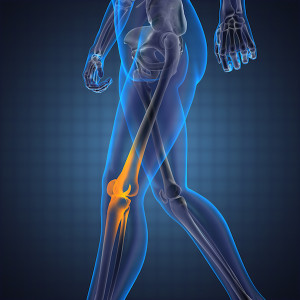 A meniscectomy may be a suitable treatment option for people with a torn meniscus in the knee. This is an arthroscopic surgery in which the surgeon inserts a tiny camera into the joint through small incisions.
A meniscectomy may be a suitable treatment option for people with a torn meniscus in the knee. This is an arthroscopic surgery in which the surgeon inserts a tiny camera into the joint through small incisions.
Orthopedic Institute of the West, led by prudent board certified orthopedic surgeon Dr. Brandon Gough provides treatments for the knee, shoulder and hips to patients in Phoenix, Scottsdale, Arizona, and surrounding locations in the illustrious Copper State.
ARTHROSCOPY PROCEDURE
Arthroscopic surgery is used to view the joint by inserting a small camera, roughly the size of a pencil, into the joint via a tiny incision (approximately one cm). The surgeon will use one or more small incisions to place instruments within the knee to excise torn cartilage.
The incisions are sealed with one suture placed either beneath the skin or on the outside. The surgeon will place a bandage over the arthroscopic incisions for a minimum of one or two days to ensure that the incisions remain sterile.
Various instruments are used to remove the torn meniscus, such as scissors and small shavers. The arthroscope will also enable the surgeon to view the knee joint in its entirety to look for loose cartilage pieces, signs of arthritis, the knee ligaments, and other issues within the joint.
IS AN ARTHROSCOPIC MENISCECTOMY PAINFUL?
In general, arthroscopic knee surgery is associated with minimal pain. An anesthesiologist will oversee the entire procedure to make sure that the patient remains comfortable.
After the procedure, the patient will receive instructions on what pain meds to take in case they feel uncomfortable. Ice therapy is also useful for the knee in the initial recovery period, along with keeping the knee elevated.
There are many options for anesthesia, including:
- General Anesthesia: The patient sleeps through the procedure with general anesthesia. An anesthesiologist will oversee the patient’s vital signs and breathing during the surgery, and awaken them when the surgery is complete.
- Regional Anesthesia: This will include spinal anesthesia and epidural, and these options are suitable for most knee arthroscopy procedures. The patient stays awake during the surgery.
- Local Anesthesia: Some types of knee arthroscopy surgeries can be performed using local anesthesia. Light sedation is administered before the surgery. However, if the procedure causes the patient discomfort, they may require general anesthesia.
WILL I NEED CRUTCHES?
Patients are given crutches only for comfort after a majority of arthroscopic procedures. The patient can stop using the crutches once they feel steadier on their feet.
But certain procedures such as meniscus repair and ACL reconstruction may warrant the extended use of crutches. Before discontinuing crutch use, the patient should always check with their surgeon.
REHAB AFTER MENISCECTOMY SURGERY
Patients can typically return to their routine activities quite briefly after their arthroscopic knee surgery. A majority of patients take a few days or a long weekend off work to recover.
If the meniscus is taken out, also known as partial meniscectomy, there are typically only a few restrictions on activities. As long as the patient does not experience pain, they can walk around normally.
The patient may consult their doctor about their specific rehab because the knee may require protection for an extended period. Reliable board certified orthopedic surgeon Dr. Brandon Gough receives patients from Phoenix, Scottsdale, Arizona, and other cities and towns in this area of the southwest for knee, hip, and shoulder treatments.
For more information about hip and knee procedures and treatments by Arizona Board certified orthopedic surgeon, Brandon Gough, M.D., please click here or call us at 602-359-3088. Taking new patients in and around Phoenix, Scottsdale, Glendale, Tempe, Mesa and surrounding Arizona cities.


